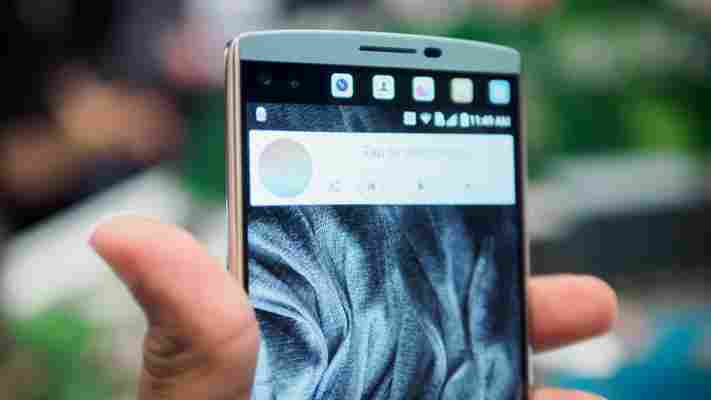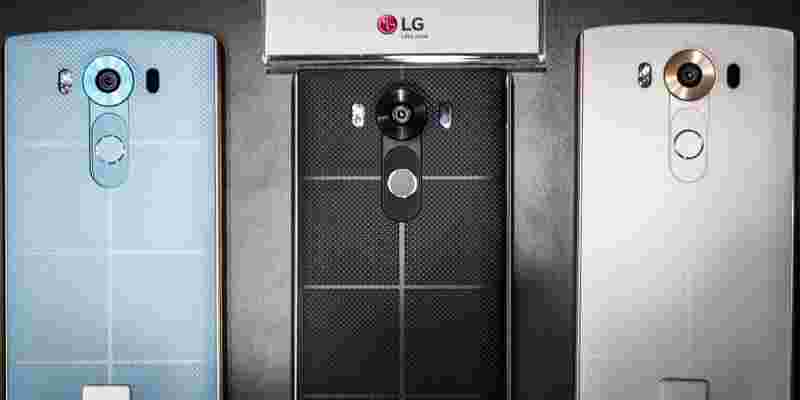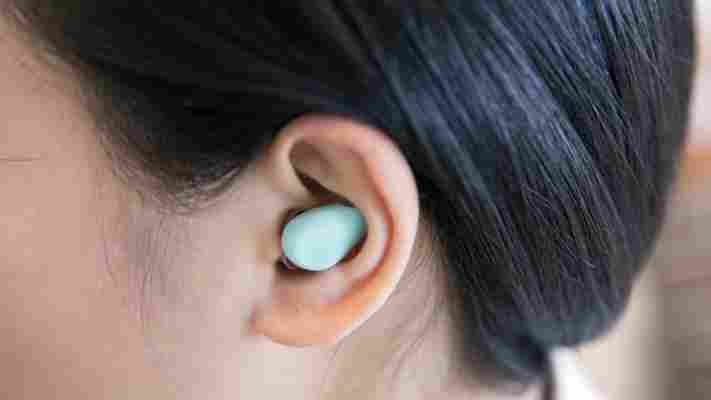Sharing your heartbeat with your loved one(s) via the Apple Watch has largely been discarded as a gimmick by many. Pillow Talk is a new product that takes the same idea and may be a lot more compelling to those separated from their significant other.

You and your S.O. go to your separate beds with Pillow Talk wristbands on and a small accompanying pad placed under your pillows. Then as you drift off to sleep, you can hear and feel the other person’s heartbeat through your pillow, and they receive yours.
It’s either a fun gimmick or a beautiful expression of intimacy, depending on how you choose to see it. Either way, Pillow Talk is launching on Kickstarter today, and the company behind it, Little Riot , is looking to raise $150,000 to bring the device to market.
I’ll be honest, I’d thought Pillow Talk must already be on the market, as UK-based Little Riot founder Joanna Montgomery has been talking about the product for five years. I’ve seen her at conferences, speaking about the idea several times. So what took so long?
“When I started developing the idea, hardware startups weren’t cool,” Montgomery says. “The ‘wearables’ wave hadn’t struck yet and the technology still wasn’t really good enough for me to execute it. For example, Bluetooth Smart didn’t exist commercially. There was a distinct lack of guidance, help and advice for people building any sort of hardware or consumer electronics, so I had to learn everything the hard and expensive way.
“I’ve worked with eight different engineering firms in four different countries and been screwed over countless times by people who couldn’t deliver but wanted to ride my press wave. Oh, and then there was the small matter of my investors trying to close my company on Christmas Eve 2013.”


Montgomery still doesn’t know the reason for this pull-out, but Wayra stepped in, backed Little Riot and let its legal team resolve the issue.
So, it’s been a rough ride to get where she is now, but Montgomery says that being open and public about the process has been very helpful.
“In the first year I won £70,000 ($106,000) of grant and competition funding just by pitching it everywhere ; I wouldn’t even have a company if I’d been protective or secretive about my idea. And because it’s been all over the internet, quite often I go places and people have already seen it/read about it and they go ‘ohhhh, you’re the pillow girl!’ which is cool.
“I mean, the downside is that all my failures and setbacks have always been very public, but being open and honest is something I truly believe in – as both a person and a company – so I’m happy to share it all with everyone if it can help make anyone else’s journey a little bit easier.”
Now, finally, Pillow Talk is ready for mass production, and I for one think it’s a beautiful, heartwarming concept. It’s live on Kickstarter now, and the minimum price to get your hands on a device is £52, with delivery expected in May 2016.
➤ Pillow Talk
Hands-on: LG’s V10 beats the G4 with great design, two screens and crazy video chops
LG has a new flagship line on the block, and it’s starting with the V10 . Unveiled at an event in New York today, the 5.7-inch phone takes a lot of what people liked about the G4 and supercharges it with an improved build and an even more powerful camera – especially for video.

Though the phone sounds pretty gimmicky on paper (Why is there a second screen? Who needs two selfie cams?) I came away very impressed from our brief hands-on.
It took me about two seconds of holding the V10 to conclude that it’s easily LG’s best designed hardware. I’d put it up there with the iPhone 6 and Note 5.


The phone is a combination of stainless steel and silicone, and I appreciate that neither front or back look like any other device out there. The smooth steel sides are classier than the old fake-metal plastic, while the removable silicone back adds a reassuringly grippy layer of durability. LG has experimented with many materials for its removable covers, but I think the V10 strikes the best balance.
In fact, LG is touting ‘military-grade’ durability. While it’s not flexible like some other LG phones, the company says the ‘Dura Skin’ silicone and steel frame allows it to easily withstands drops from four feet. Moreover, the back remains removable, so you can always get a new one if it gets scratched up. No mention of waterproofing, however.
As is LG’s style, all your buttons are mounted on the back panel under the camera, though this time the power button doubles as fingerprint sensor (a first for LG).
LG makes a good case that phones with removable backs can still look good.
The device features a 5.7-inch Quad HD panel (513 ppi) and a second 2.1-inch panel that’s always on and sits above the notification bar and next to the selfie cams (more on this later). The entire front of the device is protected by Gorilla Glass 4.
The phone is powered by a Snapdragon 808 chip – not the fastest chip around, but it’s reliable – flanked by an impressive 4GB of RAM (1GB more than the G4) and a default 64GB of ROM that’s mercifully expandable to up to two whole terabytes.
It’s gonna need all that storage too, because you’ll be using the cameras a lot. On the rear, the 16MP sensor and F1.8 lens array is the same as on the excellent G4, but you’ve also got two 5MP front facing cameras set to different focal lengths – one for solo shots, another for group ones.
The battery is only 3,000 mAh, the same as a the G4. That’s just okay, and perhaps a little worrisome given the V10 has a larger display(s), but hopefully LG has worked the same kind of battery magic Samsung managed with the Note 5 (which has also has a 5.7-inch screen and a 3,020 mAh battery). At least it comes with quick charging by default, and you can swap batteries whenever you want.
The video specs are where the V10 easily outclass any phone before it. It shoots up to 4K at either a standard 16:9 or a cinematic 21:9 aspect ratio, and supports 60, 30 and 24fps at several bitrates. If you’re not familiar, 24 fps is a big part what gives professional video cameras that “movie-like” quality, and as far as I know, this is the first time its been seen on a major smartphone.
You get full manual control during recording, including shutter speed, ISO, exposure, white balance, focus, and zoom. Video is stabilized by a combination of optical and digital OIS, and there is an impressive set of onboard editing tools and quick sharing features.
Perhaps crazier than the video, there are three directional microphones you can manually monitor and adjust to cut out wind noise, or to focus on nearby or far sounds.
The V10 offers more control during video than most DSLRs and mirrorless cameras. Oh, and there’s still an IR Blaster, too.
The second screen allows you to swipe between a customizable set of quick-launch apps, and notifications will appear there when watch full-screen content. If you’re listening to music, you can play, pause or skip without sliding down the notification bar. Yes, it’s a gimmick, but it could be useful.
It also has specialized functionality within LG’s apps. For example, it can control zooming while in the camera, so you don’t clutter the screen with more controls. When the phone is off, besides showing notifications, the second screen allows you to do things like connect to Wi-Fi or turn on the flashlight.
Speaking of screens, LG noticeably improved its Quantim IPS display for the V10. Some people thought the G4’s screen was a little dull and cool, so they’ll be happy to hear the V10 is the tiniest bit warmer and colors are more pleasantly saturated. Blacks seemed deep for an LCD and brightness was about the same as the G4, which is good.
Performance was solid, with no noticeable hiccups. Switching between apps was faster than on my G4, and about the same as on the Note 5 – though that could be partly attributed to being a fresh device. A LG rep demoed speedy fingerprint detection as well.
For stills, the camera app appeared nearly identical to the G4’s, which is not a bad thing. You have pretty much all the manual controls you’d want, though it’s still a little slower shot-to-shot than the Note 5. We’ll have to see how final image quality holds up in the test lab though.
As for those dual-selfie cams, it seems like vanity overkill, but there’s at least a tiny bit of photographic merit to it. As a general rule, filling up a frame with a wide-angle portrait is less flattering than doing so with a narrower field of view, so the two cameras could help you achieve more attractive selfies depending on whether you’re flying solo or with friends. But seriously, two selfie cams.
Returning to video, it’s much too early to make full conclusions on video quality, but I’d argue the level of control here is more important anyway, and we already know LG’s sensor is worthy. Film-makers can simply do more than what most other cameras allow – interchangeable lens cameras included – and the sample footage LG demo’d looked nearly broadcast quality; we’ll update this post if we can get our hands on the video.
The V10 has a few cheesy-looking tricks, but it also hits a ton of checkmarks. The specs go toe-to-toe with other flagships, it has a fingerprint sensor for Android Pay, the design is one of the most unique and seemingly durable around, and the video chops are miles ahead of what competitors offer.
Besides, LG is pretty much your only flagship choice if you want both expandable storage AND a MicroSD card slot, which greatly pleases the Android die-hard in me.
There are two big question marks left : battery life and price. But if the V10 can last a day on a charge and isn’t exorbitantly overpriced, we think LG could have a winner in its hands.
The V10 goes on sale on in November in the US, and will be available from Verizon, AT&T and T-Mobile.
Can your ear help you get pregnant? Meet the YONO wearable
There’s been an explosion of wearables for health and fitness , with a widespread mainstream adoption of step counters, heart-trackers and other gadgets designed to help you stay in peak form. But, even as both hardware and software companies clamor to capitalize on widespread interest in health data, women’s health issues remain underserved. Especially when you’re trying to get pregnant.

Now, a woman’s ear could be the key to conception.
In an effort to successfully procreate, women can use technology to gather data and pinpoint times where they are especially fertile. But to this data, women must diligently record a variety of different symptoms manually in order to determine whether they’re ovulating.
One of the most common data points is the Basal Body Temperature (BBT), or the lowest temperature of a body in a 24-hour period. Obtaining the BBT requires a woman to take her temperature when she first wakes up, before she sits up, and preferably at the same time every day.
YONO, currently in the midst of a Kickstarter campaign , is an in-ear wearable designed to take the BBT of a sleeping woman. Slip it on at night, and the YONO tracks the body temperature to determine when it reaches its lowest point, gathering data points every five minutes. Then, in the morning, a the YONO is removed and placed on its charging cradle, which broadcasts the data from the earpiece to a mobile app via Bluetooth.
“It’s so easy to forget to take your Basal Body Temperature,”said Vanessa Xi, CEO and founder of Bay Area-based YONO Labs . “But now, the only thing users need to do every day is to wear the earbud.”
A longtime IBM employee working at the company’s Asia Pacific Headquarters in Shanghai, Xi founded YONO after her own struggles with fertility. She worked alongside medical professionals from the Bay Area to develop the wearable, considering many different design options. After testing many locations to put the device, Xi and her team settled on tracking the temperature of the inner ear.
“Our technology is quite different from infrared technology, which you see in traditional in-ear thermometers,” Xi said. “Our sensor measures the body temperature in the ear canal.”
See it in action in the video below:
The device does require you to be a relatively sound sleeper: woman’s BBT often occurs between 2am and 6am and Xi said the YONO needs a couple of hours of work to gather data points. But the earbud is designed to stay put throughout the night without canceling noise or transmitting data. But otherwise the YONO is more relaxed with data gathering — women do not need to wake up or go to sleep at strict times, or tabulate data strictly.
“They don’t even have to remember to transfer data every day,” Xi added. “Every 3 to 5 days is no problem at all.”
Once the data is transferred to the app (which will be available for both Android and iOS), YONO will determine through BBT when a woman is ovulating. Users can also input other symptoms to help augment YONO’s calculations. Xi says that YONO is smart.; after gathering data over time, it’s better at pinpointing fertility days.
For that convenience, women will pay an MSRP of $149, quite a bit more than a drugstore basal thermometer . Xi recognizes the cost involved — especially since women don’t know when their efforts will be successful. That’s why the company is starting a leasing program, which will offer women a chance to use YONO for for four months for $60 and a $15 refund per month not used if pregnancy happens quickly. The company is also marketing that it is safe to give YONO to a friend or family member after it has been used.
When it comes down to it, the YONO is clearly an option for couples who are experiencing difficulty getting pregnant, or who are sticklers for data to begin with. It’s not a must-have or even a lifetime piece of equipment. But it serves an important niche for women who are tired of tracking their data every day without assistance from smart technology.
So far, the wearable is near its goal of $30,000 with 40 days left. Enter the leasing program for $60, or access the early-bird purchase of $99.
➤ YONO Fertility Friend, a wearable basal thermometer [Kickstarter]
Read Next: Report: Google is distributing a business version of Glass that attaches to different glasses
